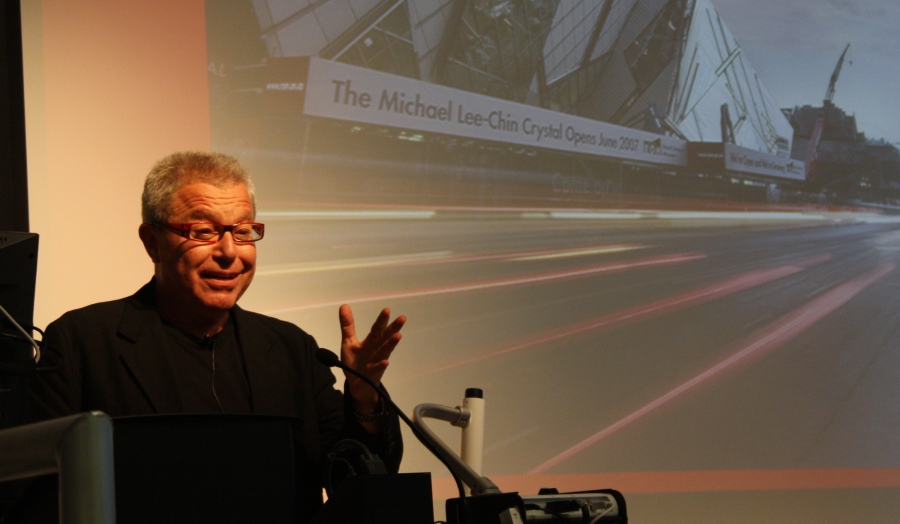Ten years on since London Met's iconic Graduate Centre opened, its creator, architect Daniel Libeskind returns to London Met.
Date: 30 June 2014
The Daniel Libeskind Graduate Centre is very much a jewel in London Met's crown and without a doubt the most iconic landmark on Holloway Road.
Libeskind's trademark design style has attracted architecture fans across the world since the opening of the building ten years ago, and the man behind the famous creation did the same, when he gave a public lecture to a packed auditorium in the Graduate Centre on Tuesday 24th June.
The internationally celebrated architect was introduced by the CASS Dean of Architecture and Spatial Design, Prof. Robert Mull, who shared a joke about an incident during the building works when a member of public called the police to report a “building collapsing on Holloway Road”.
“It took a little explaining to convince them that it was just the design which represents the constellation of Orion”, he said.
Professor Mull also praised the Graduate Centre design, which was recently named among the top-ten most spectacular university buildings in the world, saying that it plays a huge role in the regeneration of the area.
The creator of the striking metallic building then took the stage giving a talk on his career, future plans and of course about the award-winning structure which he holds dear to his heart mentioning that it still is “one of his favorite projects”.
“I am proud of this building. It is a delight to be back,” he said.
Libeskind said that the diversity and range of different backgrounds of the London Met community charms him and he feels close to the idea that at London Met, students are often the first of their families to go to University, as he was once the first of his family to progress into higher education.
Liebskind started his music studies in Israel and continued later in New York performing many years as a professional before finding his true passion in the world of structural design.
“People often ask if I left music to study architecture, but I never did. To me it is just another instrument and another way to express myself. Architecture fits to all of my personal interests,” he said.
Libeskind has always regarded it as important to study first and practice afterwards. “It often hardly works the other way around and it becomes hard to go back and learn,” he said during the evening.
Current London Met Architecture students were of course keen to hear his views and used the Q&A time. His final advice for them was:
“Don’t believe that what people tell you is always correct. You can still create something completely different.”
The architect is also known for designing the Jewish Museum in Berlin and his plans for the World Trade Centre site in New York.
Find out more about studying Architecture at London Met: Architecture and Interior Design (Extended degree) or Architecture BA (Hons) RIBA Part 1

